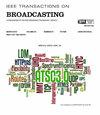Stable Viewport-Based Unsupervised Compressed 360° Video Quality Enhancement
IF 3.2
1区 计算机科学
Q2 ENGINEERING, ELECTRICAL & ELECTRONIC
引用次数: 0
Abstract
With the popularity of panoramic cameras and head mount displays, many 360° videos have been recorded. Due to the geometric distortion and boundary discontinuity of 2D projection of 360° video, traditional 2D lossy video compression technology always generates more artifacts. Therefore, it is necessary to enhance the quality of compressed 360° video. However, 360° video characteristics make traditional 2D enhancement models cannot work properly. So the previous work tries to obtain the viewport sequence with smaller geometric distortions for enhancement. But such sequence is difficult to be obtained and the trained enhancement model cannot be well adapted to a new dataset. To address these issues, we propose a Stable viewport-based Unsupervised compressed 360° video Quality Enhancement (SUQE) method. Our method consists of two stages. In the first stage, a new data preparation module is proposed which adopts saliency-based data augmentation and viewport cropping techniques to generate training dataset. A standard 2D enhancement model is trained based on this dataset. For transferring the trained enhancement model to the target dataset, a shift prediction module is designed, which will crop a shifted viewport clip as supervision signal for model adaptation. For the second stage, by comparing the differences between the current enhanced original and shifted frames, the Mean Teacher framework is employed to further fine-tune the enhancement model. Experiment results confirm that our method achieves satisfactory performance on the public dataset. The relevant models and code will be released.基于稳定视口的无监督压缩 360$^{\circ}$ 视频质量增强技术
随着全景相机和头戴式显示器的普及,人们录制了许多 360° 视频。由于 360° 视频的二维投影存在几何失真和边界不连续性,传统的二维有损视频压缩技术总是会产生较多的伪影。因此,有必要提高 360° 视频压缩的质量。然而,360° 视频的特性使得传统的 2D 增强模型无法正常工作。因此,之前的工作试图获取几何失真较小的视口序列来进行增强。但这种序列很难获得,而且训练好的增强模型也不能很好地适应新的数据集。为了解决这些问题,我们提出了一种基于稳定视口的无监督压缩 360° 视频质量增强(SUQE)方法。我们的方法包括两个阶段。在第一阶段,我们提出了一个新的数据准备模块,它采用基于显著性的数据增强和视口裁剪技术来生成训练数据集。在此数据集的基础上训练标准的二维增强模型。为了将训练好的增强模型转移到目标数据集,设计了一个移位预测模块,它将裁剪一个移位的视口剪辑作为模型适应的监督信号。在第二阶段,通过比较当前增强的原始帧和移位帧之间的差异,采用平均教师框架来进一步微调增强模型。实验结果证实,我们的方法在公共数据集上取得了令人满意的性能。相关模型和代码即将发布。
本文章由计算机程序翻译,如有差异,请以英文原文为准。
求助全文
约1分钟内获得全文
求助全文
来源期刊

IEEE Transactions on Broadcasting
工程技术-电信学
CiteScore
9.40
自引率
31.10%
发文量
79
审稿时长
6-12 weeks
期刊介绍:
The Society’s Field of Interest is “Devices, equipment, techniques and systems related to broadcast technology, including the production, distribution, transmission, and propagation aspects.” In addition to this formal FOI statement, which is used to provide guidance to the Publications Committee in the selection of content, the AdCom has further resolved that “broadcast systems includes all aspects of transmission, propagation, and reception.”
 求助内容:
求助内容: 应助结果提醒方式:
应助结果提醒方式:


